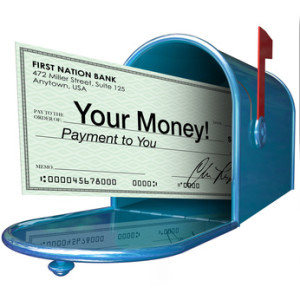When do I pay my Bankruptcy Chapter 13 Payment?
You’ve just reviewed and signed your Chapter 13 Bankruptcy documents and your Nebraska bankruptcy attorney is planning to file your case.
Now you wonder when you need to make your first Chapter 13 payment. The Bankruptcy Code states that your Chapter 13 payment is due “not later than 30 days after the date of the filing of the plan or the order for relief.” 11 U.S.C. §1326 (a)(1).
The order for relief stated above is the moment your bankruptcy case is filed and is the date the Bankruptcy Court in Nebraska goes by in determining the date of your first payment.
You will receive a letter in the mail from the bankruptcy trustee letting you know what day your payment is due and how much. Your bankruptcy plan payments will be due on the same day of each month until your case has concluded.
How do I make my Bankruptcy Chapter 13 Payment?
Before your case is filed your Nebraska Bankruptcy Attorney should discuss your Chapter 13 payment options.
The preferred method by the trustee and bankruptcy court is to have your Chapter 13 payment deducted from wages. Your employer will send your payment to the bankruptcy trustee the same it does for your portion of payroll taxes to the I.R.S. If you are paid twice monthly, half would be deducted from your first monthly paycheck and the remainder deducted from your second monthly paycheck.
This method has several advantages:
- You know that your Chapter 13 payment will definitely be paid on time.
- You are able to budget with your remaining income without worrying about the bankruptcy payment.
The other is to pay the bankruptcy trustee directly. There are several disadvantages to using this option:
- You must provide a reason to the Bankruptcy Judge and receive permission to pay directly. Your bankruptcy attorney will need to file a motion to be given permission. Sometimes this may cost extra.
- The bankruptcy trustee only accepts certified funds, such as a money order or cashier’s checks. No personal checks, cash, debit card, paypal, or ACH withdrawal.
- Money orders and cashier’s checks have a fee, which could become costly during the 36 or 60 month plan.
- Having to make sure the bankruptcy payment is made each month and that you can cover it in your budget.
There is a service that might help you with paying the bankruptcy trustee directly. Paymytrustee.com will deduct your monthly payment from your checking account, plus a small fee, and send the bankruptcy trustee your plan payment in money order form so you do not have to go the bank, post-office, or seedy cash advance store.
I recommend having your Chapter 13 payment deducted from wages if at all possible. Sometimes, it can’t happen, for instance, with the self-employed, business owners, or retirees.
If you decide to have payment deducted from your wages, you may have to make the first payment directly to the bankruptcy trustee because the wage withholding through your employer may not be set up in time for your first payment, but after that first payment it should be up and you no longer have to worry about it.
It will get time to get used to this Chapter 13 payment, but luckily, after completing your plan you will be out of debt, will be used to your spending budget under the bankruptcy plan, and can put the plan payment toward your retirement!
